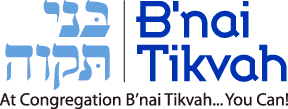Before we conclude our study of the Torah service, we would be remiss if we didn’t address the issue of “trop”, the melody system used when chanting the Torah or the haftorah. If you think about how we sing the first paragraph of the Shema (“v’ahavta et…”) that melody reflects the Torah trop. If you look at a text in the chumash, you’ll see that over or under every word there is some kind of “squiggle.” Those “squiggles” are taamei hamikra, the symbols which indicate which melody is to be used to sing that particular word.
The purpose of these melodies is not merely aesthetic (although they are quite beautiful). The trop symbols reveal a great deal about sentence structure, as well as clarifying certain grammatical questions about the sentence. Even the placement of the trop symbol over or under a word can elucidate the proper accent, and that helps distinguish between homographs (words that look the same but can sound different.) Think entrance (door) and entrance (charm). Remember that in the Torah text itself, there is no punctuation, no periods or commas, no vowels, and no trop. Trop play an essential role in helping the reader memorize the portion to be read.
The trop system is extraordinarily complex. First, there are about 30 different trop symbols. Each trop signals a different melody, and those melodies can include very long phrases (one, the shalshelet, is 15 notes long!). Second, there are numerous different melodies associated with the trop, depending on the geographic source of the reader’s tradition. The five common modes are Yemenite, Ashkenazic, Middle Eastern/North African, Jerusalem Sefardic, and Northern Mediterranean. But within these different traditions there are numerous variations. A commonly used tool called the Trop Trainer includes no less than 27 Ashkenazic variants and 5 Sefardic ones.
And on top of all that, within each variant there are different melodies for 1) Torah; 2) Haftarah; 3) High Holy Days; 4) Megillat Esther on Purim; 5) Megillat Eichah on Tisha B’av; and 6) the Books of Song of Songs, Ruth, and Ecclesiastes (Kohelet) read during Passover, Shavuot, and Sukkot respectively.
Generally speaking, there is unanimity concerning which trop symbols go with which word (even if the melody associated with the symbols can vary widely). They were set in the Tanach about 1200 years ago by a group known as the Masoretes (hence, the common Bible uses the Masoretic text.) An exception to the rule is the reading of the Ten Commandments, which has two different trop patterns associated with it. The common one (called the lower trop) does what trop normally do—have a concluding melody for each sentence. The unusual one (called the upper trop) is only used when the Torah is read publicly. The upper trop divides the text not by sentence, but by commandment. So, for example, the commandment concerning Shabbat is four verses (sentences) long. The lower trop distinguishes between these four sentences. The upper trop reads (that is to say, sings) the text like one long sentence, only ending when the whole commandment is completed.
Rabbi Robert L. Wolkoff
